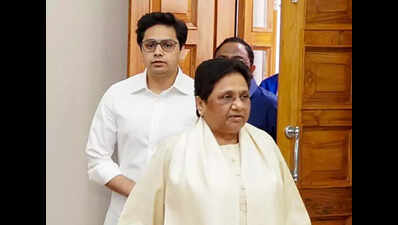Conspiracy to keep ‘Bahujans’ out of education, research: Rahul Gandhi slams govt on vacant university pos – The Economic Times

Report on Vacant Reserved Academic Posts and Implications for Sustainable Development Goals
Introduction
A report based on figures presented in Parliament highlights significant shortfalls in the appointment of reserved category candidates to academic positions in central universities. Allegations have been made that these vacancies represent a systemic issue, undermining the principles of equity and inclusion. This situation has profound implications for India’s commitment to achieving several key Sustainable Development Goals (SDGs).
Analysis of Reported Vacancies
Data indicates a substantial number of unfilled posts designated for Scheduled Castes (SCs), Scheduled Tribes (STs), and Other Backward Classes (OBCs). The vacancies are reported across different academic levels:
- Professor Posts:
- 83% of posts reserved for ST candidates remain vacant.
- 80% of posts reserved for OBC candidates remain vacant.
- 64% of posts reserved for SC candidates remain vacant.
- Assistant Professor Posts:
- 69% of posts reserved for OBC candidates remain vacant.
- 65% of posts reserved for ST candidates remain vacant.
- 51% of posts reserved for SC candidates remain vacant.
Concerns have been raised that a “Not Found Suitable” (NFS) justification is frequently used to leave these positions unfilled, which is viewed as a failure of institutional responsibility.
Impact on Sustainable Development Goals (SDGs)
The failure to fill these reserved posts directly contravenes the objectives of multiple SDGs.
-
SDG 4: Quality Education
This goal aims to ensure inclusive and equitable quality education for all. The lack of representation from SC, ST, and OBC communities in faculty positions creates a significant barrier to inclusivity. It limits diverse perspectives in research and curriculum development and can negatively impact the academic environment and mentorship opportunities for students from these communities.
-
SDG 10: Reduced Inequalities
SDG 10 focuses on reducing inequality within and among countries by promoting the social, economic, and political inclusion of all. The reservation policy is a primary tool for addressing historical and systemic inequalities. The non-fulfillment of these quotas exacerbates disparities and hinders the social and economic empowerment of marginalized ‘Bahujan’ communities, undermining the core principle of this goal.
-
SDG 8: Decent Work and Economic Growth
This goal promotes full, productive employment and decent work for all. By not filling these academic positions, qualified candidates from SC, ST, and OBC backgrounds are denied access to stable, high-value employment. This obstructs their economic growth and perpetuates cycles of disadvantage, contrary to the goal of ensuring equal opportunity.
-
SDG 16: Peace, Justice, and Strong Institutions
Effective, accountable, and inclusive institutions are the bedrock of SDG 16. The reported situation points to an institutional failure to implement national policies effectively and transparently. It raises questions about the accountability of university administrations and the justice of their hiring processes, suggesting a weakness in the institutional mechanisms designed to ensure equity.
Conclusion and Recommendations
The significant number of vacant reserved posts in central universities poses a serious challenge to India’s developmental agenda and its commitment to the SDGs. The primary recommendation emerging from this issue is the immediate and transparent filling of all vacant positions. Upholding the constitutional mandate for reservation is not merely a matter of compliance but a critical step toward building a more equitable, inclusive, and sustainable society in line with the Sustainable Development Goals.
SDGs Addressed in the Article
-
SDG 4: Quality Education
The article discusses the staffing of central universities, which is a critical component of providing quality tertiary education. The lack of representation from Scheduled Castes (SCs), Scheduled Tribes (STs), and Other Backward Classes (OBCs) in teaching positions affects the inclusivity and quality of the educational environment.
-
SDG 10: Reduced Inequalities
This is the central theme of the article. It highlights the systemic inequality and exclusion of marginalized communities (‘Bahujans’) from employment opportunities in higher education, directly pointing to a failure to reduce inequalities based on social origin.
-
SDG 16: Peace, Justice and Strong Institutions
The article critiques public institutions (central universities) for failing to implement reservation policies, referring to it as “institutional Manuism.” This points to a lack of effective, accountable, and inclusive institutions that ensure representative decision-making and equal access to public service employment.
-
SDG 8: Decent Work and Economic Growth
The issue of a high number of vacant posts for specific communities relates to the goal of achieving full and productive employment and decent work for all, particularly for marginalized groups.
Specific SDG Targets Identified
-
Target 10.2: Empower and promote the social, economic and political inclusion of all
The article directly addresses the lack of social and economic inclusion of SC, ST, and OBC communities in the higher education sector. The claim that this is a “well-planned conspiracy to keep Bahujans out of education, research and policies” points to a failure to achieve this target.
-
Target 10.3: Ensure equal opportunity and reduce inequalities of outcome
The core issue is the failure to fill reserved posts, which denies equal opportunity and creates an inequality of outcome. The article alleges that existing reservation policies are not being implemented effectively, leading to discriminatory outcomes where “thousands of eligible SC, ST, OBC candidates are being declared ineligible.”
-
Target 4.5: Eliminate gender disparities in education and ensure equal access to all levels of education and vocational training for the vulnerable
While not about gender, this target’s focus on ensuring equal access for “the vulnerable” and “indigenous peoples” is highly relevant. The article highlights the lack of access for vulnerable communities (SCs, STs, OBCs) to employment within the education system itself, which is a critical aspect of an equitable educational framework.
-
Target 16.7: Ensure responsive, inclusive, participatory and representative decision-making at all levels
The significant underrepresentation of SC, ST, and OBC communities in professor and assistant professor roles means that decision-making bodies within universities are not representative. The article argues this leads to the “problems of deprived communities” being made to “disappear from research and discussions.”
Indicators for Measuring Progress
The article does not mention official SDG indicators by name, but it provides specific data that can be used as direct, practical indicators to measure progress towards the identified targets.
-
Proportion of vacant reserved teaching positions in public universities
This is the primary indicator implied throughout the article. The specific data provided serves as a baseline measurement of the problem.
- Professor Posts Vacant: 83% for STs, 80% for OBCs, and 64% for SCs.
- Assistant Professor Posts Vacant: 65% for STs, 69% for OBCs, and 51% for SCs.
-
Representation of marginalized groups in public institutions
The data on vacant posts is a proxy indicator for the overall representation of SC, ST, and OBC communities in academic positions within central universities, which are key public institutions. A low vacancy rate would indicate higher representation and progress towards Target 16.7.
Summary of SDGs, Targets, and Indicators
| SDGs | Targets | Indicators (as identified in the article) |
|---|---|---|
| SDG 10: Reduced Inequalities |
|
Percentage of vacant reserved posts in central universities, broken down by community:
|
| SDG 4: Quality Education |
|
Parity in representation of marginalized groups (SCs, STs, OBCs) in teaching positions in tertiary education. The high vacancy rates indicate a significant lack of parity. |
| SDG 16: Peace, Justice and Strong Institutions |
|
Proportion of positions held by marginalized groups (SCs, STs, OBCs) in public institutions (central universities). The article’s data shows a severe underrepresentation. |
Source: m.economictimes.com

What is Your Reaction?
 Like
0
Like
0
 Dislike
0
Dislike
0
 Love
0
Love
0
 Funny
0
Funny
0
 Angry
0
Angry
0
 Sad
0
Sad
0
 Wow
0
Wow
0














































































